Full Moon 2023 Calendar: Schedule, Dates, Time and Name
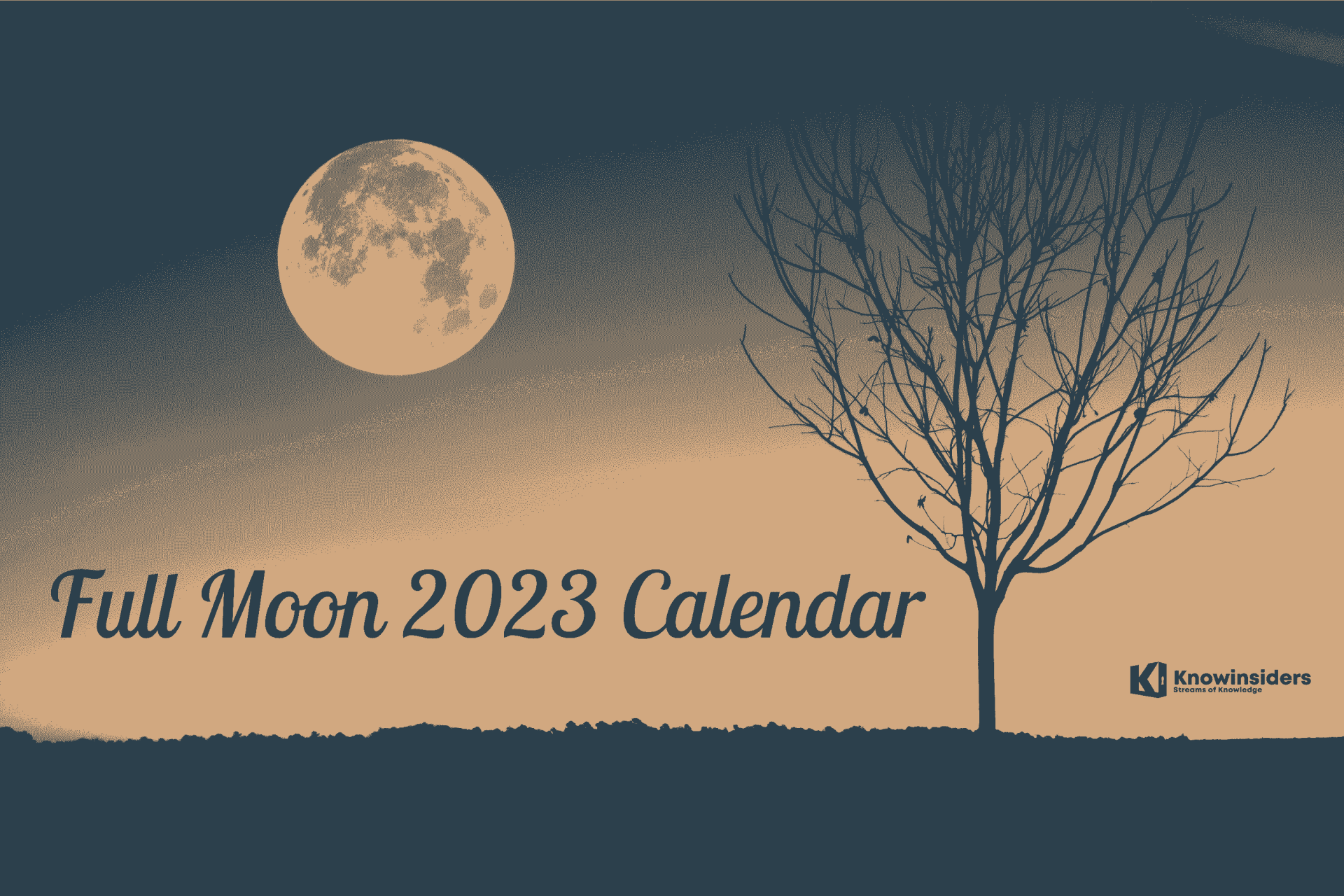 |
| Schedule of Full Moon 2023 - Photo KnowInsiders |
| Contents |
What Is A Full Moon?
A Full Moon occurs when the Moon appears as a complete circle in the sky. We see it as a full orb because the whole of the side of the Moon facing the Earth is lit up by the Sun's rays.
We can only see the parts of the Moon that are illuminated by other objects because the Moon emits no visible light of its own.
Exoplanets and Earth's reflection of starlight (called "Earthshine") contribute a negligible amount of illumination. Still, the Sun is the Moon's primary illumination source.
From new Moon to full Moon via a 'waxing' (growing) and 'waning' (shrinking) moon, the Moon appears in the sky in a variety of shapes. The positions of the Sun, Earth, and Moon in relation to one another cause these phases.
When the Moon is in its orbit between Earth and the Sun, the Moon's back side is illuminated while the side facing Earth is in darkness. A new Moon occurs when this happens.
The near side of the Moon is fully illuminated when the Moon is on the opposite side of the Earth from the Sun, creating a full Moon.
READ MORE: First Quarter Moon Birthday: Personality Traits, Life Horoscope - Prediction for Your Destiny
How Often Does a Full Moon Occur?
 |
| Photo science |
A full Moon happens roughly every 29.5 days. This is the length of time it takes for the Moon to go through one whole lunar phase cycle.
Is there a full Moon every month?
Even the English word "month" can be traced back to the Latin word for "moon," suggesting the close connection between lunar cycles and the calendar months.
A month was originally defined to be either 29 or 30 days, roughly equal to the 29.5-day lunar cycle. We originally had 12 months in our calendar, but some of those months had extra days added to them so that the solar year would equal 365 days.
There may be instances where two full Moons occur within a single month due to the discrepancy between the modern calendar and the Moon's phases. There will be what most people refer to as a "blue moon" in the near future.
What are the Names of Full Moon 2023?
The names of the 2023 full moons are as follows:
January 6: Full Wolf Moon
February 5: Full Snow Moon
March 7: Full Worm Moon
April 6: Full Pink Moon
May 5: Full Flower Moon
June 3 (June 4 UTC): Full Strawberry Moon
July 3: Full Buck Moon
August 1: Full Sturgeon Moon
August 30 (August 31 UTC): Full Blue Moon
September 29: Full Harvest Moon
October 28: Full Hunter’s Moon
November 27: Full Beaver Moon
December 26 (December 27 UTC): Full Cold Moon
Full Schedule of Full Moon 2023
January 6, 2023 (Full Wolf Moon)
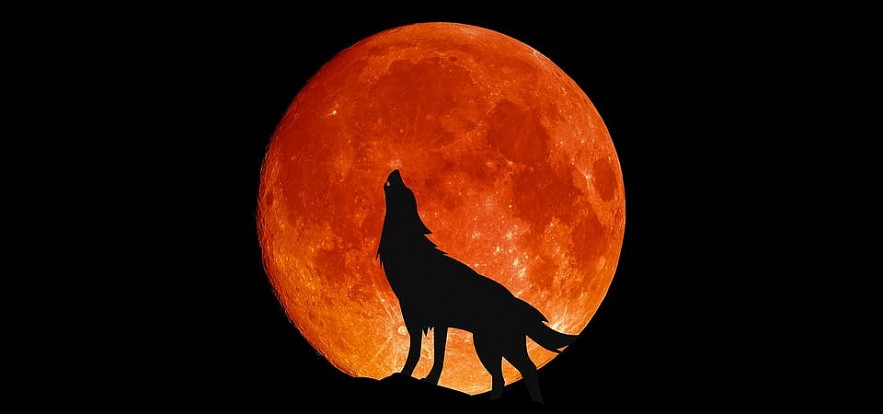 |
| Photo Forbes |
On January 6, 2023 at 6:08 PM EST (or 11:08 PM UTC), the Full Moon will occur. This Full Moon is known as the Full Wolf Moon. Because the full moon in December 2022 occurred before the Winter Solstice, this will be the first full moon of the Winter 2022-2023 season. The full moon in January will be in the sign of Cancer.
The January full moon is traditionally called the Wolf Moon because it is the first full moon of the year. Now, the moon already affects humans in a variety of ways, but a full moon amplifies those effects. Our deepest thoughts and feelings, it is said, are under the moon's control.
It's interesting to note that Wicca and paganism both honor the moon and attribute feminine influences to it. On the evening of the full moon, they also perform rituals invoking the celestial body and releasing the lunar magic held within the neighborhood. It's a challenging, all-encompassing, and profoundly spiritual endeavor, as the energy of the moon is channeled to the earth.
Why is January’s full moon called Wolf Moon?A full moon occurs when the moon is directly opposite Earth and is illuminated by sunlight. When this occurs, the entire lunar surface can be seen from Earth. The full moon in January is said to have been named after wolves by Native American communities because their howling could be heard echoing through the cold January nights. The Anglo-Saxons also place a high value on the Wolf Moon. January is known as Wulf Monath (or Wolf Month) in Saxon. Faoilleach, the Gaelic word for January, comes from faol-chù, the Gaelic word for wolf. As a result of the severe cold, this moon is also known as the Hard Moon or Severe Moon. The Cold Moon occurs at the end of December, shortly after Yule, a significant winter solstice festival. Wolf howling tends to increase in January as well. According to legend, they perform for the full moon. There is no hard evidence that wolves have a preferred direction of travel, but wolves tend to look upwards, and the higher frequencies of their howls travel farther. Due to the moon's extreme distance from Earth in January, this full moon is also known as the Micromoon. This full moon, which occurs smack dab in the middle of winter, is sometimes called the "Frost Exploding Moon" to emphasize the moon's association with the season's bitter cold. |
February 5, 2023 (Full Snow Moon)
The February 2023 Full Moon, also called the Full Snow Moon, will be on Sunday February 5, 2023 at 1:29 PM EST or 6:29 PM UTC. This will be the second full moon of the Winter 2022-2023 season as the second full moon after the 2022 Winter Solstice. The February Full Moon will be the full moon in Leo.
Check: What is Snowmoon: Name Origin, Date, Time and Interesting Myths
| The February Full Moon is named after the snow on the ground. Some Native American tribes named this the Hunger Moon; others call it the Storm Moon. |
March 7, 2023 (Full Worm Moon)
On Tuesday, March 7, 2023 at 7:40 AM EST (12:40 PM UTC), the Full Worm Moon will occur. Since it occurs before the vernal equinox in 2023, this full moon will be the season's third and final one. The full moon in Virgo will occur in March.
A couple of weeks after March Full Moon is the Vernal Equinox (or Spring Equinox), which will occur on March 20, 2023 at 5:25 PM EDT (10:25 PM UTC).
| The time of year when earthworms begin to emerge again after hibernating is the inspiration for this full moon's name. When the Spring Equinox arrives at the end of March each year, the birds return to their usual migration patterns. The Full Moon in March is also known as the Sap Moon, Crow Moon, Chaste Moon, Sugar Moon, and Lenten Moon. |
April 6, 2023 (Full Pink Moon)
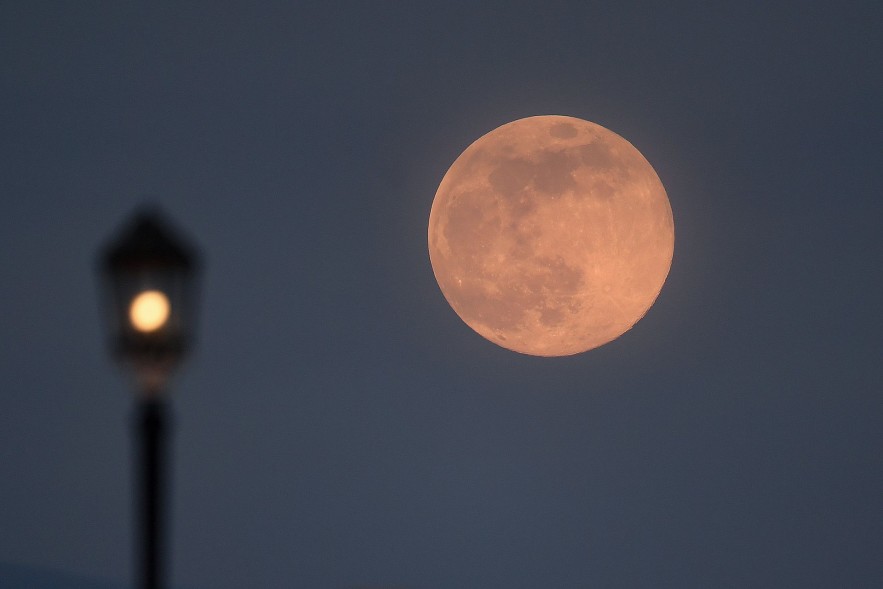 |
| Photo CNN |
The April 2023 Full Moon, also called the Full Pink Moon, will be on Thursday April 6, 2023 at 12:34 AM EDT or 5:34 AM UTC. This will be the first full moon of the Spring 2023 season and the first full moon after the spring equinox 2023. The April Full Moon will be the full moon in Libra.
READ MORE: What is Snowmoon: Name Origin, Date, Time and Interesting Myths
Why is it called the Pink Moon?The name "Pink Moon" originates from the early spring wildflower known as pink moss or Phlox Subulata. Most commonly, you'll find these blooms in the North American continent. This is why we associate the Pink Moon with the arrival of spring. |
May 5, 2023 (Full Flower Moon)
On Friday, May 5, 2023, at 1:34 PM EDT (or 6:34 PM UTC), we'll see the Full Moon that's commonly known as the Full Flower Moon. This full moon will be the second full moon of Spring 2023 and the second full moon after the spring equinox. The Full Moon in Scorpio will occur in May.
At the same time as the full moon, technically 9 minutes before the full moon peak, there will be a Penumbral Lunar Eclipse.
The full moon in May has a name that alludes to the seasonal shifts taking place outside. The indigenous people of North America gave this month the name "Flower" due to the abundance of blooming flowers and other fragrant plants. Due to the favorable climate, vegetation flourishes. Flowers bloom profusely because the soil is sufficiently warmed, the sun is strong, and rain is plentiful. The populace is alive with optimism and a hunger to do good. Because of how optimistically one views their environment, even the fantastical appears plausible. There is widespread happiness, unity, and hope for a miracle. Biological survival is guaranteed by Mother Nature. Milk Moon is another name for the full moon that occurs in May.
June 3, 2023 (Full Strawberry Moon)
On June 3, 2023 at 11:42 p.m. EDT (or June 4, 2023 at 4:42 a.m. UTC), we'll see the Full Moon that's also known as the Full Strawberry Moon. With its timing roughly two weeks before the Summer Solstice in 2023, this full moon will be the third of the spring season. The full moon in Sagittarius will occur in the month of June.
On June 21, 2023, at 10:58 AM EDT (or 3:58 PM UTC), the Summer Solstice is expected to occur.
The Strawberry Moon is a well-known lunar event that occurs annually. The Strawberry Full Moon is also called the Strawberry Harvest Moon. The ripening of strawberries in late July or early August is thought to be the inspiration for the name of this moon, which occurs around the same time.
When the berries are ready to be picked, there is no need to worry about storms or rainfalls, as the weather is typically pleasant and warm during this time.
July 3, 2023 (Full Buck Moon)
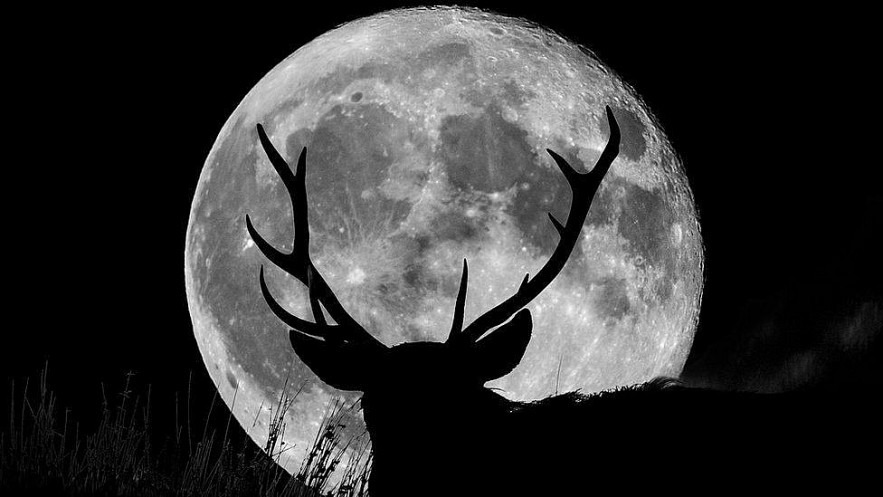 |
| Photo Getty |
The July 2023 Full Moon, also called the Full Buck Moon, will be on Monday July 3, 2023 at 7:39 AM EDT or 12:39 PM UTC. This will be the first full moon of the Summer 2023 season as the first full moon after the Summer Solstice. The July Full Moon will be the full moon in Capricorn.
Why it’s Called the Buck MoonThe July full moon is called the “Buck Moon” because this is the time of year when a buck’s (male deer) antlers grow the fastest. It means mating season is coming because bucks use their antlers to fight for dominance. |
August 1, 2023 (Full Sturgeon Moon)
On August 1, 2023, at 2:31 PM EDT (or 7:31 PM UTC), we'll see the Full Sturgeon Moon. As the second full moon following the Summer Solstice, 2023's second full moon falls in the midst of the summer season. It will be one of two supermoons in 2023. A full moon in Aquarius will occur on August 1st, the first full moon of the month.
Named After a Big Old FishSturgeons can be found in abundance in the Great Lakes of North America during August, hence the name "Sturgeon Moon" for the Full Moon that month. The lake sturgeon is the most prevalent species of sturgeon in the Great Lakes, with a maximum female lifespan of 150 years and a maximum male lifespan of 55 years. It is the largest species of freshwater fish in the Americas, reaching lengths of over two meters (six feet) and weights of around 90 kilograms (200 pounds). Great Lakes sturgeon are the oldest and largest native species in the Great Lakes, the world's largest surface freshwater system. |
Start of Harvesting SeasonCorn Moon is the English name for the Full Moon that occurs in August, a name that was likely inspired by the bountiful harvest that occurs at the beginning of the harvesting season in the Northern Hemisphere. Grain Moon was another name for it among the Anglo-Saxons. The Lynx Moon and Dispute Moon were names given to it by the Celts, both alluding to the precarious equilibrium between nature and harvest. Similarly, the English translation of this name is "Lightning Moon," in reference to the more frequent occurrence of late-summer thunderstorms with thunder and lightning in Northern Europe. |
August 30, 2023 (Full Blue Moon)
On Wednesday, August 30, 2023, at 9:35 p.m. EDT (or August 31, 2023, at 2:35 a.m. UTC), there will be a full blue moon. This is the third and final full moon of the summer of 2023. In 2023, there will be two such supermoons. The full moon in Pisces will occur on the second of August.
The term "blue moon" is used to describe the occurrence of a second full moon within a single calendar month. Considering that the second Full Moon in August will also be a supermoon, the term "super blue moon" has been coined to describe this phenomenon.
September 29, 2023 (Full Harvest Moon)
On Friday, September 29, 2023, at 5:57 AM EDT (10:57 AM UTC), we'll see the September Full Moon, also known as the Full Harvest Moon. It's the season's first full moon, so Autumn 2023 is officially underway. The full moon in September will be in the sign of Aries.
It's important to note that a Penumbral Lunar Eclipse will occur at the same time as the full moon, precisely 10 minutes before the full moon's peak.
On September 23, 2023, at 2:50 AM EDT (7:50 AM UTC), the Autumnal Equinox will occur. Full Harvest Moon is the name given to the September full moon because it occurs closer to the Autumn Equinox than the October full moon.
Which season includes the September Full Moon?The September 2023 Full Moon will usher in the 2023 autumn season and be the first full moon of the year. In 2023, this full moon will be the first one after the Autumnal Equinox. For astronomers in the Northern Hemisphere, the Autumnal Equinox signals the start of autumn and the end of summer. On Saturday, September 23, 2023, at 2:50 AM EDT (7:50 AM UTC), the Autumnal Equinox will occur. Depending on how the full moons line up with the Autumnal Equinox, the Full Harvest Moon may occur at the end of Summer or the beginning of Autumn. |
October 28, 2023 (Full Hunter’s Moon)
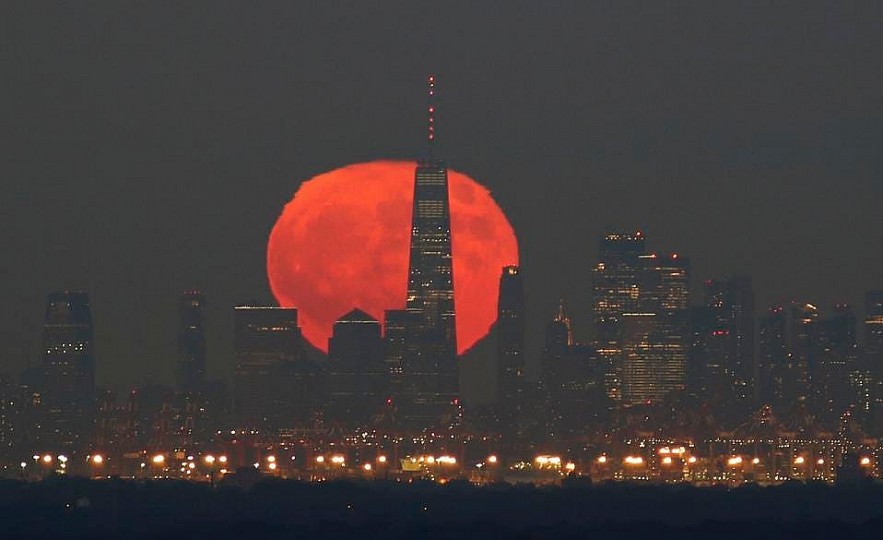 |
| Photo Getty |
The October 2023 Full Moon, also called the Full Hunter’s Moon will be on Saturday October 28, 2023 at 4:24 PM EDT or 9:24 PM UTC. It will be the second full moon of the Autumn 2023 season as the second full moon after the Autumnal Equniox. The October Full Moon will be the full moon in Taurus.
November 27, 2023 (Full Beaver Moon)
The November 2023 Full Moon, also called the Full Beaver Moon, will be on Monday November 27, 2023 at 4:16 AM EST or 9:16 AM UTC. It will be the third full moon of the Autumn 2023 season. The November Full Moon will be the full moon in Gemini.
December 26, 2023 (Full Cold Moon)
The December 2023 Full Moon, also called Full Cold Moon, will be on Tuesday December 26, 2023 at 7:33 PM EST or December 27, 2023 at12:33 AM UTC. It will be the first full moon of the Winter 2023-2024 season as the first full moon after the Winter Solstice. The December Full Moon will be the full moon in Cancer.
The Winter Solstice is on the calendar for December 21, 2023 at 10:28 PM EST or December 22, 2023 at 3:28 AM UTC.
Check: Facts about Cold Moon - Last Full Moon of the Year: Date, Timings, All you need to Know
Which season includes the December Full Moon?In 2023, the December Full Moon will be the first full moon of the WInter 2023-2024 season. It will be the first full moon after the Winter Solstice in 2023. The Winter Solstice marks the beginning of astronomical winter and the end of astronomical autumn in the Northern Hemisphere. |
Why is there a full Moon in the middle of the day?When looking at the table, you may notice that there are instances where a full moon occurs during the middle of the day. The question is, how is this possible? Despite the fact that the Moon is often visible during the day, the idea of a full Moon occurring during the day may seem counterintuitive at first. There is, however, a simple explanation. This occurs because the time is based on the precise moment when the Sun and Moon are in a polar alignment, as seen from Earth. The term "syzygy" describes the precise alignment of the Sun, Earth, and Moon at any given time of day or night. Even on the night before or the night after the precise moment of 'full Moon,' the Moon will still appear full. |
Chinese Moon Names
| Month | Name | Month | Name |
|---|---|---|---|
| January | Holiday Moon | July | Hungry Ghost Moon |
| February | Budding Moon | August | Harvest Moon |
| March | Sleepy Moon | September | Chrysanthemum Moon |
| April | Peony Moon | October | Kindly moon |
| May | Dragon Moon | November | White Moon |
| June | Lotus Moon | December | Bitter Moon |
The end of the growing season, in September or October, is marked by the Harvest Moon, while the beginning of winter is marked by the Cold Moon in December. At least in the Northern Hemisphere, that's the case.
The Harvest Moon is in March, while the Cold Moon is in June, because the seasons are reversed in the Southern Hemisphere. These are common names for full moons south of the equator.
January: Hay Moon, Buck Moon, Thunder Moon, Mead Moon
February (mid-summer): Grain Moon, Sturgeon Moon, Red Moon, Wyrt Moon, Corn Moon, Dog Moon, Barley Moon
March: Harvest Moon, Corn Moon
April: Harvest Moon, Hunter’s Moon, Blood Moon
May: Hunter’s Moon, Beaver Moon, Frost Moon
June: Oak Moon, Cold Moon, Long Night’s Moon
July: Wolf Moon, Old Moon, Ice Moon
August: Snow Moon, Storm Moon, Hunger Moon, Wolf Moon
September: Worm Moon, Lenten Moon, Crow Moon, Sugar Moon, Chaste Moon, Sap Moon
October: Egg Moon, Fish Moon, Seed Moon, Pink Moon, Waking Moon
November: Corn Moon, Milk Moon, Flower Moon, Hare Moon
December: Strawberry Moon, Honey Moon, Rose Moon
 Pink Supermoon: What is it, When & How to See? Pink Supermoon: What is it, When & How to See? Our pink supermoon will light up this April. Check out our guide below to make sure you are not gonna miss out on spotting it! |
 Born on Full Moon: Life Horoscope and Personality Traits Born on Full Moon: Life Horoscope and Personality Traits Full Moon Birthday: Find out your personality traits, the best horoscope - astrological prediction for love, money, career and health. |
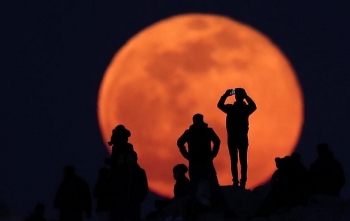 Mysterious Full Moon: Ancient Astrology and Zodiac Signs Mysterious Full Moon: Ancient Astrology and Zodiac Signs The phenomenon of the full moon has been associated with the world of astrology since ancient times with many mysterious stories. |
























